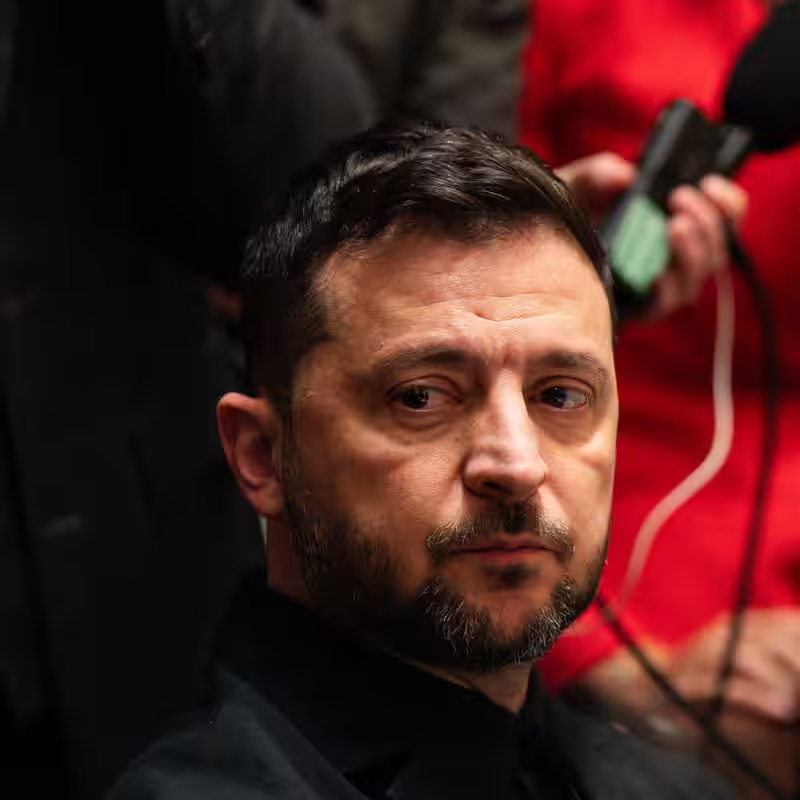In a dramatic shift just before President Volodymyr Zelensky’s White House visit, President Donald Trump has backed away from approving the sale of U.S.-made Tomahawk missiles to Ukraine—opting instead to pursue direct peace negotiations with Russia. The move leaves Kyiv without a key military leverage it had been banking on, even as its battlefield position has improved since the summer.
Table of Contents
- Missile Hope Dashed After Putin Call
- Zelensky’s Carefully Crafted Push for Tomahawks
- Ukraine’s Strengthened, Yet Weapon-Limited, Position
- Trump’s “Double Meeting” Peace Plan
- What Comes Next for Ukraine and U.S. Support?
- Sources
Missile Hope Dashed After Putin Call
For weeks, Ukrainian officials had been laying the groundwork for a major breakthrough: the acquisition of long-range Tomahawk cruise missiles capable of striking deep inside Russian territory. President Zelensky personally lobbied Trump in back-to-back calls and even dispatched aides to meet with the missile’s manufacturer in Washington.
But everything changed after Trump took a phone call from Russian President Vladimir Putin. According to multiple sources, that conversation steered Trump away from arms escalation and toward reviving peace talks. By the time Zelensky landed in Washington, the Tomahawk deal was off the table.
Zelensky’s Carefully Crafted Push for Tomahawks
Zelensky’s campaign for the missiles wasn’t just tactical—it was symbolic. With Russia continuing to pound Ukrainian energy infrastructure and front-line cities, Kyiv argued that the ability to hit strategic targets inside Russia would deter further aggression and level the playing field.
“We need the Tomahawks,” Zelensky had repeatedly stressed in public statements, emphasizing that the U.S. has “very strong production” of these weapons. His team even coordinated meetings with Raytheon, the manufacturer, to fast-track delivery logistics.
Yet, despite this meticulous preparation, the political calculus in Washington shifted overnight.
Ukraine’s Strengthened, Yet Weapon-Limited, Position
Ironically, Ukraine enters this new diplomatic phase from a position of relative strength. Since the summer, Ukrainian forces have stabilized multiple fronts, repelled major Russian offensives near Kharkiv, and maintained control over key logistics hubs.
However, without long-range strike capabilities like the Tomahawk—which can hit targets over 1,000 miles away—Kyiv’s ability to pressure Moscow militarily remains constrained. Analysts warn that entering talks without this leverage could weaken Ukraine’s hand at the negotiating table.
Trump’s “Double Meeting” Peace Plan
President Trump has proposed a summit in Budapest in the coming weeks—but not a traditional three-way meeting. Instead, he envisions a “double meeting”: separate one-on-one sessions with Putin and Zelensky.
“These two leaders do not like each other, and we want to make it comfortable for everybody,” Trump explained during Zelensky’s visit. He added that he told both leaders it was “time to stop the killing” and “make a DEAL!”
While the gesture aims for diplomacy, critics question whether a peace process brokered without addressing Ukraine’s security needs—or without granting it the weapons it requested—can lead to a durable resolution.
Focus on Ukraine
This pivotal moment underscores the high-stakes gamble Kyiv faces as it navigates [INTERNAL_LINK:Ukraine]’s path between battlefield realities and diplomatic uncertainty.
What Comes Next for Ukraine and U.S. Support?
U.S. officials insist that support for Ukraine remains strong, even if Tomahawks are off the table—for now. The White House emphasized ongoing aid in air defense systems, artillery, and intelligence sharing.
Still, the message is clear: Washington is prioritizing de-escalation over escalation. Whether that aligns with Ukraine’s strategic interests remains to be seen.
As Zelensky departs Washington, the world watches closely: will diplomacy fill the void left by withheld weapons?




